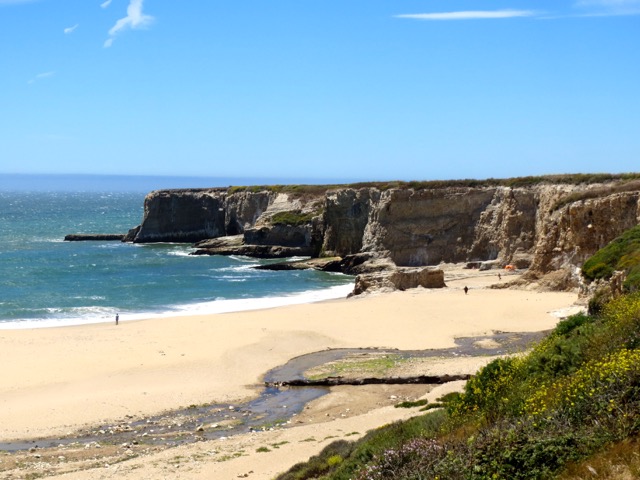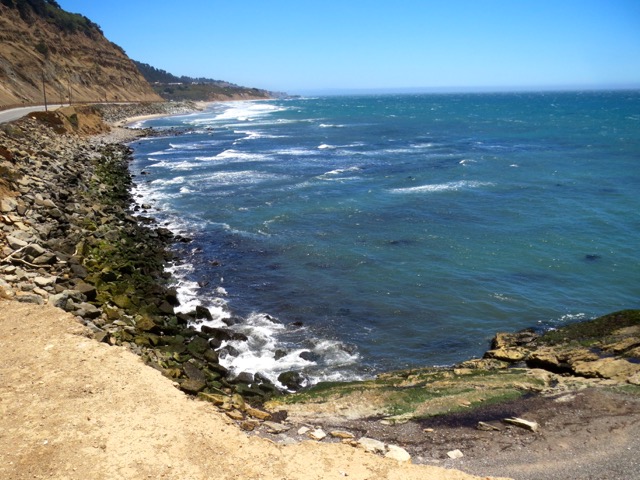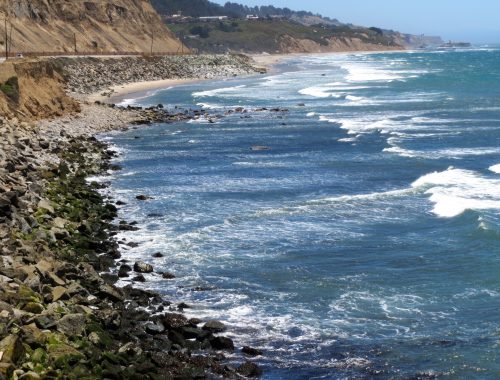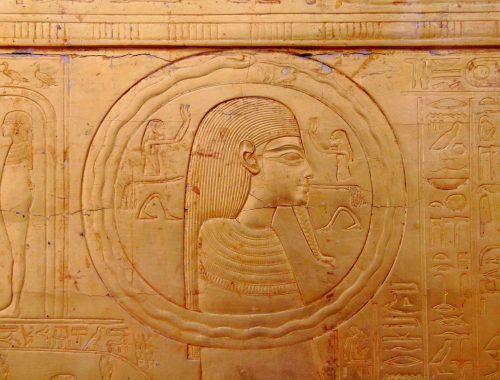
The People Are Sovereign
Who are the most respectworthy of all? It is those who are working for the happiness of others; those who are firmly dedicated to truth and justice.
THE FOLLOWING ADDRESS was given at a nationwide executive leaders conference held at the Shinano Culture Center, Shinanomachi, Tokyo, on November 25, 2003. November 28, 2016, marks 25 years since the SGI’s spiritual independence from the Nichiren Shoshu priesthood, allowing for members to freely practice and study Nichiren Buddhism without the limitations imposed by the priests. In this address, President Ikeda describes the historical backdrop of our spiritual independence and cites many of Nichiren Daishonin’s writings, proving that the SGI is advancing kosen-rufu in exact accord with his teachings. This address originally appeared in the February 27, 2004, World Tribune. Treasuring Each Individual Is the Starting Point of Kosen-rufu
Who are the most respectworthy of all? It is those who are working for the happiness of others; those who are firmly dedicated to truth and justice. This is a description of our noble Soka members, each of whom is a priceless treasure.

It is imperative that we change the state of the world in which good-hearted ordinary people are oppressed and forced to suffer. This is an age of democracy, an age when the people are sovereign. Those in even the most powerful positions of authority are there solely to serve the people. It must never be the other way around. Second Soka Gakkai President Josei Toda strictly taught us this point.
It is essential that we treasure and value each individual. This is the starting point of kosen-rufu. Let us strive to encourage everyone and warmly embrace and support them. Let us listen to their problems and work together with them for their victory.
Voices ringing with sincerity, voices filled with conviction are an incredible force for good. Words are free, just like the air we breathe. Prayer, too, is free. Though free, they are infinitely important and powerful, and form a vital foundation for our lives.
In accord with Nichiren Daishonin’s words, “One’s voice does the Buddha’s work” (see The Record of the Orally Transmitted Teachings, p. 4), it is crucial that leaders unsparingly use their voices to talk with others. I hope you will sincerely offer words of praise and appreciation to your fellow members, imparting hope and joy to all.
Life Is Action
In my youth, I loved reading the works of the 18th-century German poet Novalis (the pseudonym of Baron Friedrich Leopold von Hardenberg; 1772– 1801). A pioneer of the Romantic Movement, he proudly declared: “For us, life is action.” 1 I was very fond of these words.
As Soka Gakkai members, our greatest pride, too, lies in action. The essence of Nichiren Buddhism is that our actions demonstrate our faith.
The courageous German playwright and poet Bertolt Brecht (1898–1956), who vociferously opposed the Nazis, called out to the people: “It’s yourselves you’ll be deserting / if you rat on your own sort.” 2

In a world where human ties are growing ever more fragile and tenuous, what beautiful bonds of trust and friendship exist in the realm of Soka.
This year again, our members across Japan united together with a shared determination to lend every possible assistance to their friends in areas facing daunting challenges. In the spirit of “many in body, one in mind,” our entire membership worked hard—persevering tenaciously to the end. That is why we were able to triumph on all fronts of our movement.
President Toda often used to say even the smallest force could win if it were unified. This is important guidance for us all.
We Have True Friendship
The ancient Greek philosopher Plato (c. 428– 348 bce) said: “The good man is a friend to the good man only; but that the bad man never engages in a true friendship either with a good or a bad man.” 3
There is no room for evil, corrupt people to insinuate themselves into the pure-hearted friendship and unity found in the world of Soka—and that is precisely why such individuals are so envious of us.
As comrades, family, brothers and sisters, fellow human beings, we will fight all our lives for kosen-rufu. This is our mission. This is what unites us. We are a fighting force, a fighting fortress.
Allow me to take this opportunity to deeply commend and thank all of you for your tremendous efforts this year. Our repeated triumphs in this Year of Glory and Great Victory have indeed been significant.
You have accomplished an unprecedented feat— one equal to a decade’s achievement. This has been a decisive year in the Soka Gakkai’s momentous history. You really made the most amazing efforts and won the most amazing victory! We have never before received such a flood of praise and congratulations from our friends, supporters and leading figures around the world. I am sure all of you have felt this yourselves. From the very bottom of my heart, I would like to applaud and thank all of you for your tremendous efforts. Let’s make next year another one of resounding victory!
Accumulating Eternal Benefit Through Our Buddhist Practice
The youth division has grown. This makes me very happy.
The only way we can accumulate lasting and eternal benefit is through our Buddhist practice. Striving earnestly and humbly for the sake of kosen-rufu, without airs or pretensions, is what matters. The closing chapters of the lives of those who dedicate themselves in this way will shine with brilliant splendor.
Please become big-hearted people, strong people—indomitable champions of life.
I have engraved in my heart the following words of President Toda, who bravely stood up against Japanese nationalism and remained true to his beliefs even when thrown in jail:
If you should be imprisoned for championing truth and justice, there’s no point losing heart and worrying about when you’ll be released. Instead, forge an invincible resolve, telling yourself: “I’m in here for life!”
Mr. Toda was truly a great human being. Our reaction in one situation highlights the way we will react in all others. Firm determination opens the way forward. Please advance with confidence and strength, armed with the deep conviction that a person who upholds the Mystic Law will never be unhappy and that justice always triumphs in the end.
Corrupt Priests Colluding With the Authorities
In a letter to one of his disciples, Matsuno Rokuro Saemon, Nichiren Daishonin writes: The fifth volume [of the Lotus Sutra, the “Encouraging Devotion” chapter] states that after the Buddha’s passing, when the Latter Day of the Law arrives, a votary of the Lotus Sutra will certainly appear, and that at that time, in that country, an immeasurably great multitude of monks who either uphold or violate the precepts will gather and denounce the votary to the ruler of the country, causing him to be banished and ruined.
These passages from the sutra coincide precisely with what has happened to me. I am therefore convinced that I will attain Buddhahood in the future. (“No Safety in the Threefold World,” The Writings of Nichiren Daishonin, vol. 1, p. 892)
In this writing, the Daishonin clearly outlines the pattern by which persecution befalls the practitioners of the correct teaching in the Latter Day of the Law, referring to his own struggle based on reading the Lotus Sutra with his own life.
In other words, persecution will be caused by corrupt priests, and the means they employ will be defamation and baseless accusations. Furthermore, such priests will collude with unscrupulous individuals who hold secular authority. When practitioners triumph over such onslaughts, their attainment of Buddhahood is certain. This unchanging principle is elucidated in the Lotus Sutra and repeatedly articulated in Nichiren’s writings.
For example, in “The Selection of the Time,” he writes:
Such enemies [the powerful enemies of the correct teaching] are to be found not so much among evil rulers and evil ministers, among non-Buddhists and devil kings, or among monks who disobey the precepts. Rather they are those great slanderers of the Law who are to be found among the eminent monks who appear to be upholders of the precepts and men of wisdom. (WND-1, 584)
Further, in “On Omens,” he cites a passage from a Buddhist scripture that states, “Those evil monks will exile and put to death this man of the correct teaching” (WND-1, 647). In “Response to the Petition from Gyobin,” he also quotes another sutra in which Shakyamuni says, “It will be monks who resemble arhats with the three insights and six transcendental powers who will destroy [the] correct teachings” (WND-2, 388).
And in “The Letter of Petition from Yorimoto”—which the Daishonin wrote on behalf of his disciple Shijo Kingo to clear him of false charges— he states: “The Sage Nichiren, the envoy of the Thus Come One Shakyamuni, was exiled because of the false charges leveled against him by the priest Ryokan” (WND-1, 813).
The Hallmarks and Proof of a Votary of the Lotus Sutra
The Soka Gakkai—the noble, harmonious organization that has inherited the Buddha’s will and decree—is carrying out kosen-rufu in exact accord with Nichiren Daishonin’s teachings. That is precisely why, coinciding with the landmark event of the 60th anniversary of our founding [in 1990], we encountered persecution like that predicted in the Lotus Sutra and indicated in Nichiren’s writings. We of course have boldly gone on to triumph over that series of obstacles.
Being cursed and spoken ill of, encountering even more hatred and jealousy than during Shakyamuni’s lifetime, and being attacked by the three powerful enemies are all the hallmarks and proof of a votary of the Lotus Sutra.

We should be proud that our Soka Gakkai has matched these predictions perfectly.
A votary of the Lotus Sutra is one who fights dauntlessly against great persecution and practices the correct teaching. And a courageous practitioner of the correct teaching is also a courageous seeker of the way.
The Tremendous Growth of Kosen-rufu Is All Due to the Soka Gakkai
As I mentioned at the recent Soka Gakkai Headquarters Leaders Meeting [on November 13, 2003], this month marks 12 years since the priesthood sent the Soka Gakkai its Notice of Excommunication [dated November 28, 1991]. We have many new youth division members now, and for their sake I would like to once again relate the unfolding of events at that time.
In March 1990, the priesthood, without any discussion with the Soka Gakkai, arbitrarily announced that it was increasing the amounts of monetary offering it would be charging for performing various religious services for lay believers. For example, it raised the offering required for receiving the Gohonzon by 50 percent, and doubled the offering required for inscribing memorial tablets for the deceased (Jpn toba) and for conducting perpetual memorial services for the deceased. This was a high-handed step completely at odds with any reasonable standard of decent conduct. In hindsight, it was clearly a foretaste of the avaricious nature of the priesthood that would later be fully exposed.
Then, in April 1990, the following month, the No. 2 General Lodging Temple (a lodging for pilgrimage participants) was completed at the head temple under my sponsorship. (The No. 1 General Lodging Temple had been completed in 1988.) In 1990 alone, in addition to this second lodging temple, the Soka Gakkai had built eight branch temples for the priesthood at various locations around Japan. Incidentally, the Soka Gakkai built a total of 356 temples, of which 320 were built while I was president.
Also, over the years, we conducted countless group pilgrimages to the head temple—the aggregate attendance coming to more than 70 million— and made concerted efforts to enhance the facilities at Taiseki-ji, including sponsoring the construction of the Grand Main Temple (Sho-Hondo) and the Grand Reception Hall (Daikyakuden).
In the land reforms carried out after World War II, the grounds of Taiseki-ji were drastically reduced to less than 42 acres. Through the Soka Gakkai’s contributions over the years, however, the head temple grounds now encompass more than 816 acres, a size unprecedented in the temple’s history.
Our generous support of the priesthood is the reason why the successive high priests Nissho, Nichijun and Nittatsu4 expressed such deep appreciation and praise for the Soka Gakkai.
In particular, 1990 marked the 700th anniversary of Taiseki-ji’s founding, and to celebrate that occasion the local Shizuoka youth division conducted a wonderful culture festival in September. Yet while the youth division members were working so hard on preparations for that event, Nikken and his cronies were meeting at Taiseki-ji’s Tokyo Office in Nishikata, Bunkyo Ward (on July 16), and the Dai-shoin (a lecture hall) on the head temple grounds (on July 18), hatching a plot to destroy the Soka Gakkai, which they called Operation C [“C” standing for “cut”].
This is just the kind of intrigue aimed at obstructing kosen-rufu that Nichiren Daishonin refers to when he writes: “People hate me and ceaselessly plot in secret to do me injury” (“The Pure and Far-Reaching Voice,” WND-1, 330), and “Evil and unworthy actions such as these on the part of Gyochi continued to pile up day after day” (“The Ryusen-ji Petition,” WND-2, 826).
It was during an audience on July 21—just three days after that clandestine meeting at the head temple to plot the Soka Gakkai’s downfall—that Nikken lashed out at Soka Gakkai President Einosuke Akiya, accusing him of slanderous arrogance. Nikken’s loss of composure and his overbearing manner were entirely unbefitting of a high priest of a Buddhist school.
A Duplicitous Scheme
Then, in December, as 1990 was rapidly drawing to a close, the priesthood suddenly sent the Soka Gakkai a letter of inquiry. It contained a list of the most ridiculous charges—such as the accusation that singing Beethoven’s great hymn to universal human freedom, “Ode to Joy,” constitutes “praise for non-Buddhist teachings.” Furthermore, the priesthood demanded a response to their charges within seven days.
Seeking to find out what had prompted this situation, the top Soka Gakkai leadership made every effort to meet and hold dialogue with representatives of the head temple, but the priesthood rejected all such requests out of hand.
Then, on December 27, the priesthood convened a special council session, at which they revised the rules of Nichiren Shoshu, thereby dismissing me from the position of head of all Nichiren Shoshu lay organizations, and President Akiya and others from the position of Nichiren Shoshu senior lay representatives. Our members across the nation were stunned by this move. Their New Year’s holidays, to which they had been looking forward with such joy and anticipation, were all but ruined. Even now when I think of the pain it caused everyone, my heart aches.
Moreover, in his New Year’s message carried in the January 1991 issue of the Soka Gakkai’s monthly study journal, The Daibyakurenge, Nikken had praised the growth and development of the Soka Gakkai. This was a glaring example of Nikken being “double-tongued” (“Letter to the Sage Nichimyo,” WND-1, 324) and “contradicting his own words” (see “The Letter of Petition from Yorimoto,” WND-1, 807), which are regarded as serious offenses in Buddhism.
Making the Causes for Future Victory Now
At the start of 1991, Nikken refused to receive Soka Gakkai President Einosuke Akiya and General Director Kazuya Morita for their customary exchange of New Year’s greetings at the head temple, and shunned meeting with them any time after that as well, stating that they were “unworthy of an audience” with him.
In his writings, Nichiren Daishonin describes the cowardly manner in which the infamous Ryokan similarly tried to avoid dialogue: “When I actually did return to Kamakura [from exile on Sado], Ryokan shut his gates and forbade anyone to enter. At times, he even feigned illness, saying that he had caught a cold” (“The Teaching, Practice, and Proof,” WND-1, 482).
Nikken, like a modern day Ryokan, behaved in exactly the same fashion.
The Nature of False Sages
Nichiren Daishonin wrote in detail about the nature of arrogant false sages—the third of the three powerful enemies: 6
They reveal him [Ryokan] very clearly for what he is. First, though by reputation he is an observer of the precepts, in fact he is wanton in conduct. Second, he is greedy and stingy. Third, he is jealous. Fourth, he holds erroneous views. Fifth, he is lewd and disorderly. (“Letter to Shimoyama,” WND-2, 281)
Nichiren Daishonin clearly exposes Ryokan’s true nature. Nikken is also the epitome of a false sage.
Ryokan persecuted Nichiren and his followers with every means he could summon. In the same way, Nikken sought to persecute and cut off the Soka Gakkai.
Unfounded Accusations
Allow me to return to the subject of the letter of inquiry received from the priesthood [in December 1990, titled “Questions Regarding the Speech of Honorary President Ikeda at the 35th Soka Gakkai Headquarters Leaders Meeting” 7]. Since the priesthood continued to reject our request for dialogue on the matter, we eventually sent a written response, in which we protested their unfounded accusations and pointed out the inaccuracies in their transcription of the speech deriving from a tape of questionable origin.
As a result, the priesthood was forced to acknowledge the existence of several errors in their transcript, and they retracted the questions related to those fallacious quotations. Their retraction destroyed the entire foundation on which their spurious contentions had been based. But instead of issuing an official apology, they set about trying to stir up trouble in our SGI organizations overseas and to intimidate and alarm everyone through various means, such as refusing to confer Gohonzon on Soka Gakkai members.
The Collusion of a Modern Day Ryokan and Devadatta
Nichiren Daishonin, referring to the Lotus Sutra’s teaching that “evil demons will take possession of others” (“Errors of the True Word and Other Schools,” WND-2, 437), writes: “He [the devil king of the sixth heaven] possesses . . . foolish priests such as Ryokan, and causes them to hate me” (“Reply to Sairen-bo,” WND-1, 310).
Numerous events demonstrate that Nikken’s collusion with what Buddhism terms as an “evil companion”—an individual whom Nikken himself once denounced as resembling Devadatta [Shakyamuni’s archenemy]—lies behind the plot to disrupt the harmonious unity of the believers.
The Daishonin writes: “[In this way] did evil persons throw in their lot with Devadatta” (“The Daimoku of the Lotus Sutra,” WND-1, 147), and “Devadatta kept watch on the Buddha’s activities and with a large stone caused his [the Buddha’s] blood to flow” (WND-1, 146).
In other words, it is as if a modern day Devadatta and Ryokan joined forces to destroy the Soka Gakkai, an organization faithfully carrying out the Buddha’s intent and decree.
A Medal of Honor
The priesthood then sent us a notice announcing that the existing Soka Gakkai-operated monthly pilgrimage system8 would be abolished and that, under a new system to be implemented directly under the control of the priesthood, Soka Gakkai members would have to register with their local temples to obtain the necessary documents permitting them to visit Taiseki-ji. In other words, the priesthood attempted to use pilgrimages as a means to blackmail our members into submission. Their efforts were in vain, however, because our members refused to be taken in or swayed by such tactics.
When first and second Soka Gakkai presidents Tsunesaburo Makiguchi and Josei Toda were arrested by the Japanese militarist authorities during World War II, the priesthood also callously prohibited them and all Soka Gakkai members from visiting Taiseki-ji and any other Nichiren Shoshu branch temples.
Similarly, in 1952, when a group of youth division members launched their socalled Operation Tanuki Festival, 9 confronting a slanderous priest over his traitorous actions during the war, the Nichiren Shoshu Council convened to dismiss President Toda as Nichiren Shoshu senior lay representative and ban him from visiting the head temple.
President Toda wrote about that latter decision in his “Epigrams” column in the Seikyo Shimbun at the time:
I thought I’d receive a reward for my loyalty in rebuking slander of the Law, but instead of praise, they handed me a reproof: “You’re banned from visiting the head temple!” My disciples replied in unison, “Then we won’t visit either, so there!”
When they asked me, I smiled and said: “Don’t make such a fuss. It’s a cause for celebration.”
As is explained in the description of the three powerful enemies, one of the tricks of evildoers is to drive the votaries of the Lotus Sutra from the temples. Now the Buddha has bestowed on me the distinguished medal of honor of being banished from “towers and temples” as proof that I am a great leader of propagation.
I smiled and said: “Are the members of the Nichiren Shoshu Council the second or third of the three powerful enemies?”
Just as President Toda wisely understood, the banning of Soka Gakkai pilgrimages to the head temple could also indeed be described as a medal of honor from Nichiren Daishonin.
The Profound Wisdom and Consideration of the Buddha
The Soka Gakkai conducted and oversaw the running of group pilgrimages to Taiseki-ji with the greatest care and attention to detail, praying constantly that such visits would take place safely, without accidents. Through these painstaking efforts, we established the brilliant record of a grand total of over 70 million visitors to the head temple [over a 40 year period].
It is quite possible, however, that had our pilgrimages continued at that pace, a major accident may have occurred.
Nichiren Daishonin was always deeply concerned about his disciples’ safety. With this thought foremost in mind, he urged Shijo Kingo to refrain from visiting him at Minobu as long as the journey there and back remained dangerous (see “General Stone Tiger,” WND-1, 952–53).
How immeasurably profound his Buddha wisdom and consideration have proven to be in every sense.
I am sure that those of you who worked so hard to organize those visits to the head temple and ensure the members’ safety will appreciate this ever more deeply as the years go by.
A Petition Signed by Millions Worldwide
In November 1991, the priesthood sent the Soka Gakkai an order to disband (dated November 7), and then a notice of excommunication (dated November 28), in what were blatant attempts at intimidation. Unfazed, however, our members joyfully celebrated the day of our “excommunication” as signaling our spiritual independence from the corrupt priesthood.
On December 27, a month later—a year after the priesthood dismissed me as head of all Nichiren Shoshu lay organizations—the Soka Gakkai sent a petition demanding Nikken’s resignation from the position of high priest. Our petition was signed by some 16.25 million people worldwide. It was Nikken, on the contrary, who had been “excommunicated” by a global alliance of Bodhisattvas of the Earth, 16.25 million strong.
At the same time, upright priests of good conscience took a stand and announced their solidarity with us as comrades in faith dedicated to kosen-rufu. In total, 30 temples and 53 priests left Nichiren Shoshu.
Voices of Support From Around the Globe
Thoughtful and informed people around the globe also began to speak out in great numbers to support and defend the Soka Gakkai. Today, with gratitude to each one of them, I would like to share a few of those statements with you.
Professor Nur Yalman of Harvard University is a renowned cultural anthropologist. In his remarks following my second Harvard address in September 1993, Professor Yalman clearly stated before an audience of distinguished educators and scholars that the religious reformation being undertaken by the Soka Gakkai was a development of great significance in the history of Buddhism, just as the Protestant Reformation had been a landmark event in the history of Christianity. The Soka Gakkai’s remarkable reform movement, he noted, would have important implications not only for Buddhism but other religious traditions as well. He described it as representing a new departure and a new development in the history of religion. 10
The late Dr. David Norton, an eminent professor of philosophy at the University of Delaware in the United States, voiced his position with powerful conviction [in 1991]: “The priesthood, in its attack on the activities of the Soka Gakkai which has been extending a network of peace and culture throughout Japan and the world, is guilty of what can only be described as profound myopia, or even blindness. If asked the cause of that blindness, I’m afraid my only response would be, ‘Jealousy.’” He further said: “The priesthood’s notice of excommunication goes completely against Nichiren’s teaching that all people possess the Buddha nature and that this precious potential must never be closed off or denied.” 11
Great minds outside Japan clearly see the outrageous and foolhardy actions of the priesthood in their true light.

A Progressive Lay Movement Versus an Anachronistic Priesthood
Professor Shin Anzai (1923–98), late professor emeritus of Japan’s Sophia University and leading Japanese sociologist of religion, offered his views as follows:
In recent years the Soka Gakkai has begun to walk a new path as a lay religious organization separate from the priesthood. I view this as an inevitable result of the fundamental difference between the open, progressive Soka Gakkai and the closed, conservative priesthood. The priesthood has become an anachronism, showing no understanding of the value of peace, culture and education, clinging to hidebound traditions and attempting to control lay followers by authority and force. Had the Soka Gakkai not claimed its independence from the priesthood, it would have eventually been fated to become a self-righteous and closed religious organization, too, its bright future and global development perishing. Japanese intellectuals and journalists need to know this fact, but they completely fail to understand it. I believe this arises from a kind of envy [toward the Soka Gakkai]—the same problem that afflicts the priesthood. 12
Professor Tetsuro Aramaki, professor emeritus of Kanazawa Seiryo University (formerly Kanazawa University of Economics) and respected economist, observed:
The priesthood, which by rights should be dedicated to the salvation of all living beings, in its demands that the lay body Soka Gakkai disband, shows a callousness totally inappropriate for a religious organization. 13
In addition, Professor Yukio Kamono of Asahi University, a noted law professor who is also a professor emeritus of Kanazawa University, said:
When I heard about the Notice of Excommunication, in general I must say that I felt it was an arbitrary and extreme measure. To excommunicate an entire organization without any discussion, just a single sheet of paper—from the perspective of normal legal procedure as well—is highly irregular. 14
And the late Professor Kuniyasu Take (1933– 2002) of Kyoto’s Doshisha Women’s College of Liberal Arts argued:
Why is the priesthood seeking to disband an organization of its lay believers [the Soka Gakkai], which is dedicated to the spiritual liberation of people around the world? I feel compelled to point out the suicidal behavior of the priesthood. 15
The courageous statements of these learned figures are certain to shine forever in history.
A Life-Affirming Religion
Dr. Bryan Wilson, reader emeritus of Oxford University and the first president of the International Society for the Sociology of Religion (commonly known by its French acronym, SISR), with whom I engaged in a dialogue published as Human Values in a Changing World: A Dialogue on the Social Role of Religion, has written on this matter:
What emerges from the reactions of the priesthood to this openness to international cultures [of the Soka Gakkai] is the narrow parochialism which prevails within this closed religious caste, cut off from the currents of contemporary thought, and interpreting their spiritual inheritance as a limited and localized experience . . .
Without these endeavors by Soka Gakkai, Nichiren Shoshu would have remained an obscure Japanese sect, unknown to the outside world, and perhaps of little significance even within Japan. In affirming Buddhism as a life-affirming religion, Soka Gakkai has rescued Japanese Buddhism from its preoccupations with funeral rites for the dead. 16
Further, Dr. Wilson placed a positive construct on the discontinuation of Soka Gakkai pilgrimages to the head temple, noting that “religious faith transcends all such localized symbolism.” 17
He continued:
It is by diffusion of commitment and its manifestation in the everyday life and service of believers that a religion develops its influence and fulfills its mission. The particularistic devotion to a place—significant as it may be in the formative period of religious development—must give place to a universalistic spirit if that religion is to become a major influence in world affairs. 18
Dr. Wilson also called the emergence of lay leadership in religion as part of an inevitable historical process, and his assertion has now been borne out beyond a doubt.
Promoting the Profound Values and Universality of Buddhism
I have also published a dialogue with the late French art historian and champion of the human spirit, René Huyghe (1906–97), titled Dawn After Dark. Mr. Huyghe remarked that the world should thank the Soka Gakkai for promoting the profound values and universality of Buddhism, as well as for its efforts to advance world peace by means of elevating the human spirit based on Buddhist ideals. Anyone, he said, would surely lament disreputable attacks motivated by hunger for power or material gain that might hinder the Soka Gakkai’s admirable efforts to uplift humanity and its splendid success. 19
Dr. Howard Hunter, now emeritus professor of religion at Tufts University in the United States, said [in 1991] that he was very interested in observing what kind of effect the excommunication of more than 10 million lay followers by a tiny minority of priests claiming orthodoxy would have on the priests themselves, since it was such an extraordinary thing to do. He added that when a religious group loses touch with the hearts of its followers who are striving earnestly to apply their religious beliefs in society and the real world, that group is on the road to ossification. 20
Celebrating With Our Unprecedented Development
Twelve years have passed since we received the Notice of Excommunication from the priesthood. Our victory in light of Buddhism is crystal clear, as all of you are well aware.
Nichiren Daishonin recorded the fate of Ryokan and his colleagues: “You may think that those who believe in Priest Two Fires [Ryokan] are prospering [but this is certainly not the case]” (“The Three Obstacles and Four Devils,” WND-1, 638). The strict retribution befalling Nikken and his cohorts is proof that they have been excommunicated and condemned by the Daishonin himself.
Today, all of the aberrations of the Nikken sect have been laid bare for the world to see: the plot to try to destroy the movement for kosen-rufu, the false creed of worshiping the high priest, the erroneous view of the true heritage of Law, the misuse of priestly ceremonies and services, the discrimination that places priests above the laity, and the general corruption and degeneration that pervades the school.
In contrast, the Soka Gakkai has become the pillar of Japan and a bright light of hope for the world. It celebrates its 73rd anniversary this year with a global network that spans 186 [now 192] nations and territories and with an unprecedented tide of victories.
Nichiren Daishonin, the Buddha of the Latter Day of the Law, is undoubtedly smiling and praising us for our efforts, while at the same time commanding the protective forces of the universe to keep us safe from harm.
I am equally sure our victory would bring immense delight to Mr. Makiguchi, who once observed:
How much more serious is the offense of those Buddhist and Shinto priests who stand even further upstream and put poison into the water. In this case, even a small transgression can become an extremely grave offense, making a cause that will bring infinitely evil retribution. How much graver still it is then to oppose great good and contribute to great evil, to bow to great evil and slander great good.
I have always fully agreed with these words. In fact, it is the great evil of Nikken and his cohorts that resents and envies the great good of the Soka Gakkai.
As champions of the correct teaching, we have resolutely triumphed over the schemes of such malicious forces.
Mr. Makiguchi also remarked:
The more others slander and despise the Lotus Sutra, the greater the happiness [its votaries will ultimately come to experience as a result of this persecution]. We are certain to win in our struggle. The important thing is to put the principle of “changing poison into medicine” into practice in our lives.
On another occasion, he said, “The harder we fight and the stronger we become, the more swiftly actual proof of victory in our Buddhist practice appears.” We have fought in exact accord with the words of the Soka Gakkai’s founder. That is why we have been victorious.
“The final fate of all traitors is a degrading story of suffering and ignominy,” said Mr. Makiguchi with keen perception. What he says is absolutely true, as you have seen with your own eyes.

President Toda also declared: “To betray the Soka Gakkai is to betray Nichiren Daishonin. You’ll know what I mean, when you see the retribution they incur at the end of their lives.”
And in discussing “Letter from Sado,” he said, “The Daishonin declares that when evil priests ally themselves with evil rulers and persecute those who seek to establish the correct teaching, those who fight against such iniquity with lionhearted courage will surely attain Buddhahood.”
Mr. Toda further said: “The Soka Gakkai spirit is to work for the happiness of our country and all countries in the world . . . The purpose of kosen-rufu is to make it possible for all the world’s peoples to live in happiness.” And he declared: “Let us be as proud as lion kings! For, according to Nichiren’s writings, that is how we will become Buddhas—‘as Nichiren did.’”
Admonish the Enemies of the Buddha Even More Strongly
Nichiren Daishonin admonishes strictly:
Both teacher and followers will surely fall into the hell of incessant suffering if they see enemies of the Lotus Sutra but disregard them and fail to reproach them. (“The Essentials for Attaining Buddhahood,” WND-1, 747)
Rather than offering up ten thousand prayers for remedy, it would be better simply to outlaw this one evil. (“On Establishing the Correct Teaching for the Peace of the Land,” WND-1, 15)
From now on too, no matter what may happen, you must not slacken in the least. You must raise your voice all the more and admonish [those who slander]. (“The Fashioning of a Buddha Image,” WND-2, 257)
These are all passages that President Makiguchi and President Toda frequently referred to and cited.
Let us also never relax in our struggle, fighting on for justice to the very end, just as the Daishonin teaches.
Salute to a Warrior of the Pen
Today, November 25, is the 100th birthday21 of the Chinese writer Ba Jin, whom I have met and spoken with on four occasions. I sent the renowned author a congratulatory telegram on this magnificent milestone. Praying for his continued long life, I would like to share with you some of the words of this venerable warrior of the pen who also fought against persecution.
Steadfast in his belief that truth and justice would prevail, he wrote:
When I say that evil can never triumph over good, I am saying that in every society there is a struggle between right and wrong, between light and darkness, and the final victory must always belong to justice and light. 22
He has also said, “Just as a castle built on sand will never be indestructible, power built on lies will never endure.” 23 And, “You cannot lie to yourself.” 24
Ba Jin has always held out the hope that the people would become strong and wise, saying, “The people are the best judge.” 25 He further stated:
One thing is certain: if the majority of the people possessed a solid, self-reliant philosophy or independence of mind, refused to be blindly subservient, and spoke out for and had faith in the truth, the ugliness and hypocrisy of the world would be much diminished. 26
Ba Jin firmly believes in the importance of standing up for what is right:
The fates of many people have strengthened my own firm and unwavering conviction. That conviction is that the purpose of life is in giving, in being of service, not in receiving or in acquisition. 27
And:
If you make a start, others will advance behind you. If you take the first step, the second will be easier. If someone takes the lead, he will not be lacking in others to follow after him. In this way, the number of people walking this path is sure to increase. 28
I pray for the continued vigorous endeavors of all of you, my precious fellow members, who are leading the way on the path to world peace and happiness for all humanity.
Faith Is the Driving Force for Victory
In closing, I would like to share with you some words that I have been fond of since my youth.
The first are from the American poet Walt Whitman (1819–92), who sang in his Leaves of Grass, “I would be the boldest / and truest being of the universe.” 29 Be the boldest, truest beings in the universe! Let’s make that our goal.
The ancient Greek dramatist Sophocles (c. 496–406 bce) wrote, “In any question the truth has always greatest strength.” 30 There is no weapon stronger than the truth.
An Ch’angho (1878–1938), a leading architect of Korean independence who is often described as Korea’s Gandhi, declared: “Be determined to accomplish ten things in the time others accomplish one.” Determination is the key to growth and the source of strength.
A famous passage from the Buddhist scriptures [which is cited by Nichiren Daishonin] states:
If you want to understand the causes that existed in the past, look at the results as they are manifested in the present. And if you want to understand what results will be manifested in the future, look at the causes that exist in the present. (“The Opening of the Eyes,” WND-1, 279)
By taking up a determined struggle in the present, we will create a victorious future filled with hope and happiness. Ultimately, by triumphing now we ensure our future triumph.
Faith is the driving force for victory. I therefore call on all of you to charge ahead vibrantly, living out your lives with lionhearted courage.
____________________________________________________________________
Notes:
1. Translated from German. Novalis (Friedrich von Hardenberg), “Alle Menschen Seh Ich Leben,” in Gedichte und Prosa (Poems and Prose), compiled by Herbert Uerlings (Dusseldorf and Zurich: Artemis & Winkler Verlag, 2001), p. 119.
2. Bertolt Brecht, Bertolt Brecht: Poems 1913–1956 (London: Methuen Drama, 1984), p. 185.
3. Plato and Xenophon, Socratic Discourses (London: J. M. Dent and Sons Ltd., 1954), p. 216.
4. The 64th high priest, Nissho (1879–1957); the 65th high priest, Nichijun (1898–1959); and the 66th high priest, Nittatsu (1902–79).
5. A document titled “Questions Regarding the Speech of Honorary President Ikeda at the 35th Headquarters Leaders Meeting.” This Headquarters leaders meeting was held on November 16, 1990, to celebrate the 60th anniversary of the Soka Gakkai.
6. Three powerful enemies: Types of powerful enemies who will persecute those who spread the Lotus Sutra in the evil age after Shakyamuni’s passing. Based on the 20-line verse section of “Encouraging Devotion” the 13th chapter of the Lotus Sutra, the Great Teacher Miao-lo identifies them as arrogant lay people, arrogant priests and arrogant false sages.
7. SGI President Ikeda is also the honorary president of the Soka Gakkai. The 35th Headquarters Leaders Meeting in this instance took place on November 16, 1990.
8. After World War II, the head temple was destitute to the point where it actually contemplated turning Taiseki-ji into a tourist attraction to support itself. Out of his sincere desire to protect the head temple, second President Josei Toda started a Soka Gakkai-managed monthly pilgrimage system in October 1952, which served to contribute significantly to the subsequent development and prosperity of the priesthood over the nearly four decades in which it was in place.
9. Operation Tanuki Festival was the name given to a plan formulated by a group of youth division members in 1952 to remonstrate with a slanderous senior priest named Jimon Ogasawara. (The name of the operation came from the fact that Jimon often used to say of himself, “I’m as cunning as a tanuki [a Japanese raccoon dog].”) During the war, seeking to court favor with the militarist government, Ogasawara had espoused the erroneous doctrine that the Buddha was merely a transient manifestation of the Shinto Sun Goddess. He had also been responsible for bringing government persecution on the Soka Gakkai. In Operation Tanuki Festival, youth division members, motivated by a desire to protect the purity of Nichiren Daishonin’s teachings, refuted the priest’s misguided theory and forced him to write a letter of apology to President Makiguchi, who had died in prison for his beliefs.
10. Seikyo Shimbun (the Soka Gakkai’s daily newspaper), September 26, 1993.
11. Seikyo Shimbun, December 19, 1991.
12. Soka Shimpo (the Soka Gakkai youth division’s semimonthly newspaper), August 20, 1997.
13. Seikyo Shimbun, November 28, 1991.
14. Seikyo Shimbun, December 13, 1991.
15. Seikyo Shimbun, November 22, 1991.
16. The Daibyakurenge (the Soka Gakkai’s monthly study journal), January 1992.
17. Ibid.
18. Ibid.
19. Soka Shimpo, March 6, 1991.
20. Seikyo Shimbun, December 26, 1991.
21. Ba Jin actually turned 99 this year (2003), as he was born on November 25, 1904, but it is the long tradition for Chinese to celebrate their living relatives’ centennial birthday at the age of 99. (According to China’s People’s Daily, November 25, 2003.)
22. Translated from Japanese. Ba Jin, Mudai-shu (A Collection of Untitled Essays), translated by Takashi Ishigami (Tokyo: Chikuma Shobo, 1988), p. 78.
23. Translated from Japanese. Ba Jin, Shinwa-shu (A Collection of True Stories), translated by Takashi Ishigami (Tokyo: Chikuma Shobo, 1984), p. 157.
24. Translated from Japanese. Ba Jin, Mudai-shu, p. 95.
25. Translated from Japanese, Ba Jin, Zuiso-roku (Essays), translated by Takashi Ishigami (Tokyo: Chikuma Shobo, 1982), p. 15.
26. Translated from Chinese. From an article written by Ba Jin’s daughter, Li Xiaolin. < http://www.chinanews.com.cn/n/2003-11-21/26/371822.html> (November 21, 2003).
27. Translated from Japanese, Ba Jin, Byochu-shu (While Battling Illness), translated by Takashi Ishigami (Tokyo: Chikuma Shobo, 1985), p. 112.
28. Ba Jin, Mudai-shu, p. 53.
29. Walt Whitman, Leaves of Grass (New York: Dutton, 1968), p. 392
30. Sophocles, Fragments, edited and translated by Hugh LloydJones (Cambridge, Massachusetts: Harvard University Press, 1996), p. 413. Fragment 955.




